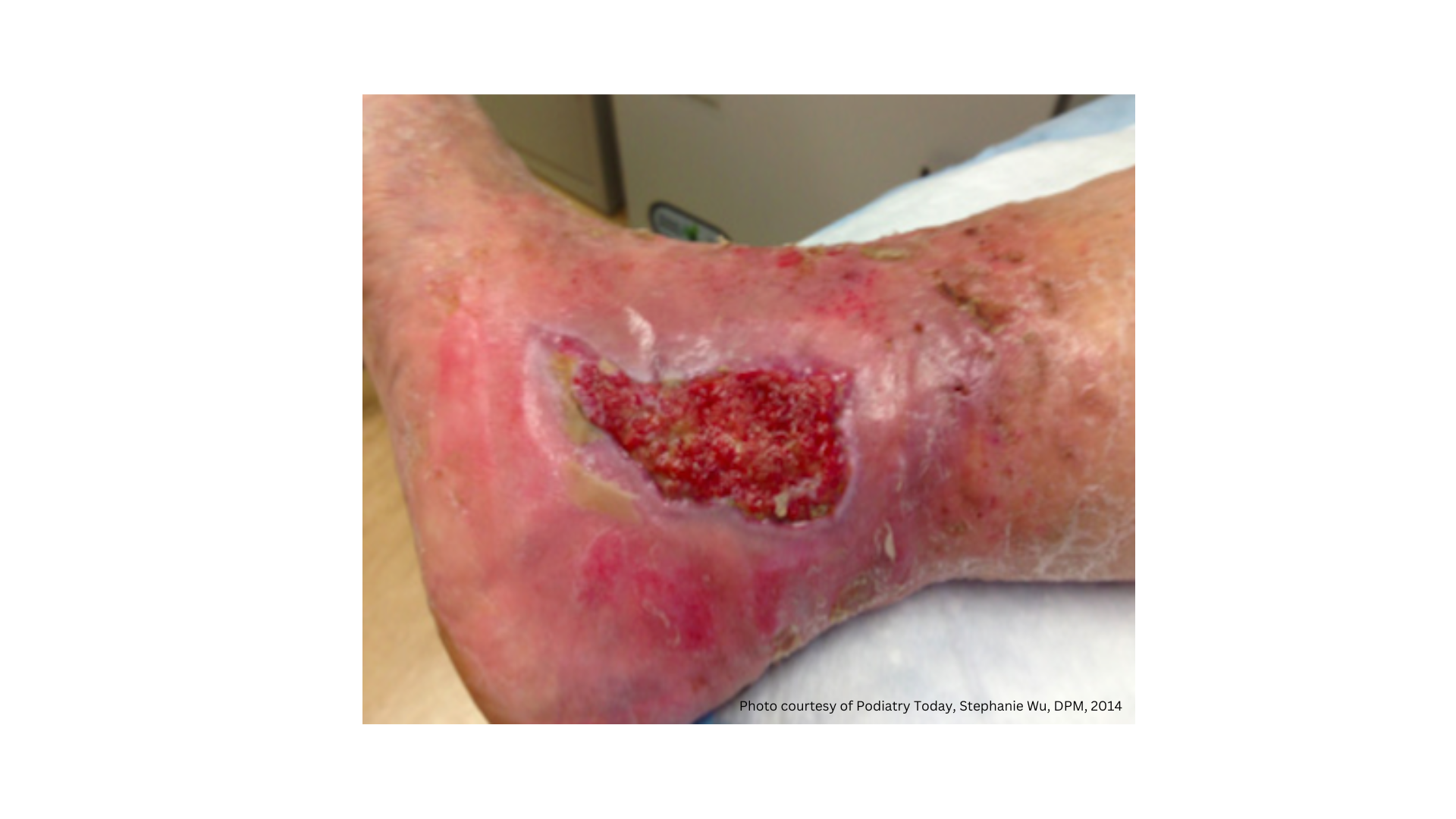Necrotic Wounds: Overview and Treatment Options
October 7, 2013
By Laurie Swezey RN, BSN, CWOCN, CWS, FACCWS
Necrotic tissue that is present in a wound presents a physical impediment to healing. Simply put, wounds cannot heal when necrotic tissue is present. In this article, we'll define necrotic tissue and describe ways to effect its removal from the wound bed.
What is necrotic tissue?
Necrotic tissue is dead or devitalized tissue. This tissue cannot be salvaged and must be removed to allow wound healing to take place. Slough is yellowish and soft and is composed of pus and fibrin containing leukocytes and bacteria. This tissue often adheres to the wound bed and cannot be easily removed. Eschar is black, dry and leathery and may form a thick covering similar to a scab over the wound bed below it.
Necrotic tissue comprises a physical barrier that must be removed to allow new tissue to form and cover the wound bed. Necrotic tissue is a vital medium for bacterial growth, and its removal will go a long way to decreasing wound bioburden.
Managing necrotic tissue
Necrotic tissue must be removed. How can this be accomplished? There are several methods to remove necrotic tissue:
- Autolytic debridement: Autolytic debridement leads to softening of necrotic tissue. It can be accomplished using dressings that add or donate moisture. This method uses the wound's own fluid to break down necrotic tissue. Semi-occlusive or occlusive dressings are primarily used. Various gel formulations can also be used to help speed the breaking down of necrotic tissue. Care must be taken to protect the skin surrounding the wound from becoming macerated. Autolytic debridement should not be used (or should be used with great caution) on diabetic wounds or wounds caused by arterial insufficiency.
- Mechanical debridement: This method is used less often. It involves the use of wet-to-dry dressings that permit the top layer of devitalized tissue to be peeled away when the dressing is removed. Unfortunately, this method can remove healthy tissue as well. This method may also be more painful for the patient. It requires frequent dressing changes, so this method may not be suitable for all patients.
- Sharp debridement: This method involves the trimming away of necrotic tissue using sterile scissors and forceps; it may be done at the patient's bedside or in a treatment room. Obviously, the clinician performing this type of debridement must have adequate knowledge of debridement technique and anatomy to avoid cutting into vital structures. Sharp debridement often requires more than one treatment (serial debridement). It can be a very effective method to jump-start a stalled wound.
- Surgical debridement: Surgical debridement is performed in the operating room under general or local anesthesia. It is used when a large area of necrotic tissue must be removed and clear margins are needed, as may be the case with infection. This method may create a much larger wound, but the wound will be clean and may heal much faster. This method is much more expensive and is usually reserved for large and badly infected wounds.
- Larval (maggot) therapy: Maggots that have been raised in a sterile environment have been used successfully to debride necrotic wounds. The maggots secrete an enzyme which breaks down necrotic tissue so that it can be ingested by the maggots. The maggots will not consume healthy tissue. Many patients find the mere idea of maggot therapy distasteful - obviously, these patients are not suitable candidates for this type of therapy.
Wounds that have necrotic tissue present will not heal, therefore one of the above methods will be required to remove the devitalized tissue. Removal of necrotic tissue will decrease wound bacterial bioburden and will allow healthy tissue to grow in its place.
Source:
Leak K. How to... Ten top tips for wound debridement. Wounds International. 2012;3(1):21-23.
About The Author
Laurie Swezey RN, BSN, CWOCN, CWS, FACCWS is a Certified Wound Therapist and enterostomal therapist, founder and president of WoundEducators.com, and advocate of incorporating digital and computer technology into the field of wound care.
The views and opinions expressed in this content are solely those of the contributor, and do not represent the views of WoundSource, HMP Global, its affiliates, or subsidiary companies.








